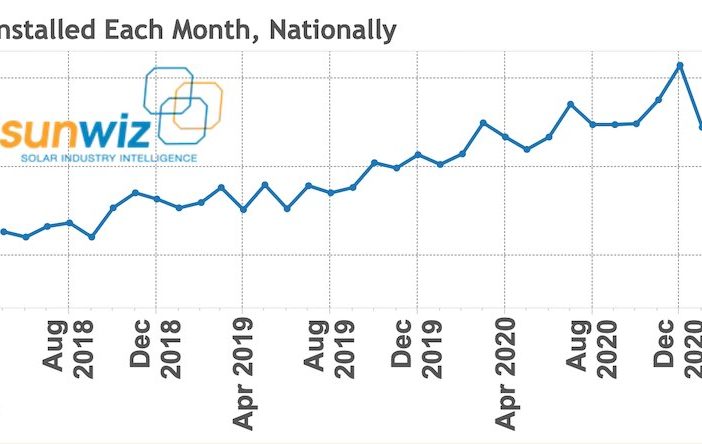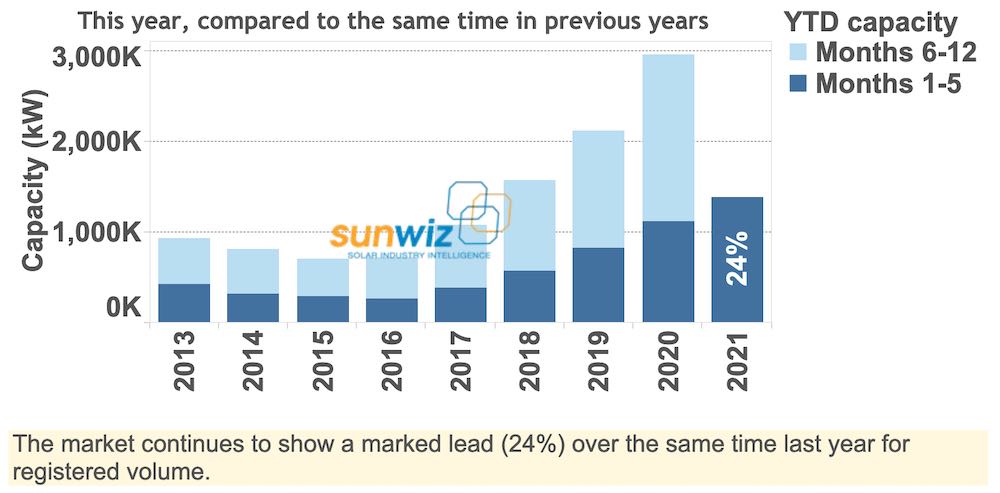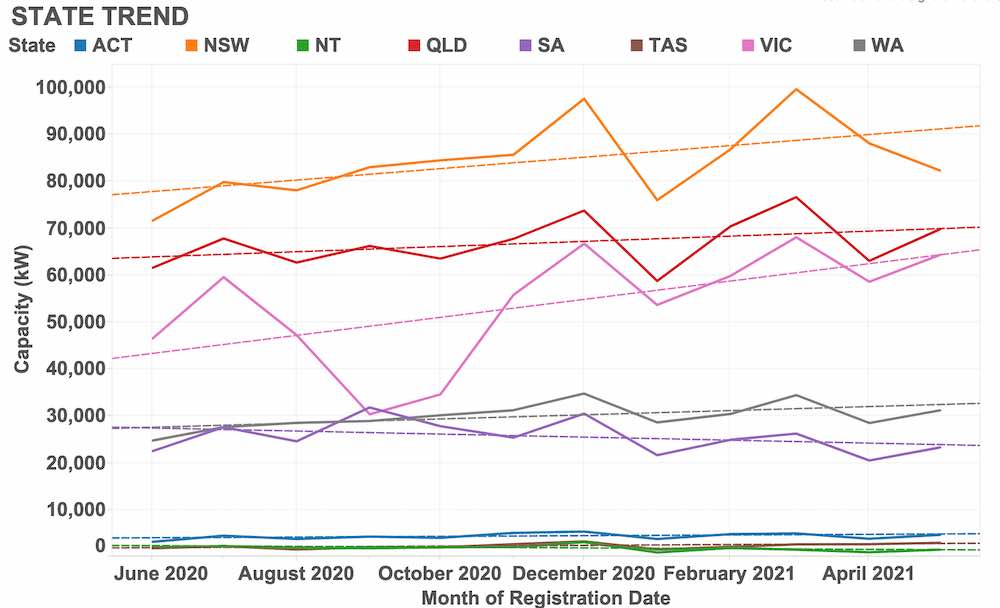
Australia’s rooftop solar market has dusted itself off after a holiday-related dip in April to chart a more than 5 per cent month-on-month increase and a much more impressive 24% lead over the same time last year for registered volume.
All up at the end of May the total installed for 2021 so far sits at around 1.4GW – well on track to reach a new record of more than 3GW by year’s end.
From a monthly perspective, however, the latest data from industry analysts SunWiz reports a respectable 5.26% increase on the volume of new installations from April (266MW) to May (280MW), with all states and territories charting an increase in volume except for Tasmania, which held steady, and NSW, whose installs decreased.
As illustrated in a bonus chart from SunWiz this month (below), NSW’s May figures are the “most worrying,” even if they are in the context of the state having the second-highest growth rate in the country.
As SunWiz managing director Warwick Johnston observes, while all other states recovered enough growth in May to come back in line with their 12-month trajectory, NSW has dipped again, taking it well below its straight-line trend.
The SunWiz data on commercial rooftop solar installs offers some clues to the downward trend in NSW. While most states saw growth over the month in the 30-100kW segment, NSW charted a decrease, as it also did in the 15-30kW range.
Elsewhere in the country, South Australia’s straight-line trend is also problematic, Johnston notes, because for that famously rooftop solar friendly state it represents a market contraction. And in Western Australia, growth is negligible.
“The NSW market is very soft, the SA and WA markets appear to be trending downwards gently and while VIC & QLD haven’t repeated their March volumes in May they are still recording top-5 month volumes,” Johnston writes.
“Amongst all of this, for Australia to record a top-5 month isn’t yet cause for concern.”
Overall, the commercial solar market in Australia saw a slight increase in registered volume in May for all size segments except for the 30-50kW range which experienced a slight downturn. The >75kW range saw the greatest percentage change.
SunWiz also notes that the 15-30kW and 30-100kW segments for all states cut into the residential (<15kW) segment, except for in Western Australia which, for the most part, held steady as a “predominantly a residential market.
Other states – the Northern Territory, Tasmania and the ACT combined – showed an increase in the proportion of residential projects.
The average residential system size also increased to 8.3kW across May, up from 8.1kW in April. The trend in system sizes has been rising relatively steadily since 2018 from an average of around 7kW to a high of 8.6kW in late 2020.
According to Australia’s “father of PV,” UNSW Scientia Professor Martin Green, consumers will soon be installing “tens of kilowatts” on their rooftops, probably coupled with battery storage, as panel costs continue to fall and batteries becomes more affordable.

Sophie is editor of One Step Off The Grid and deputy editor of its sister site, Renew Economy. Sophie has been writing about clean energy for more than a decade.






